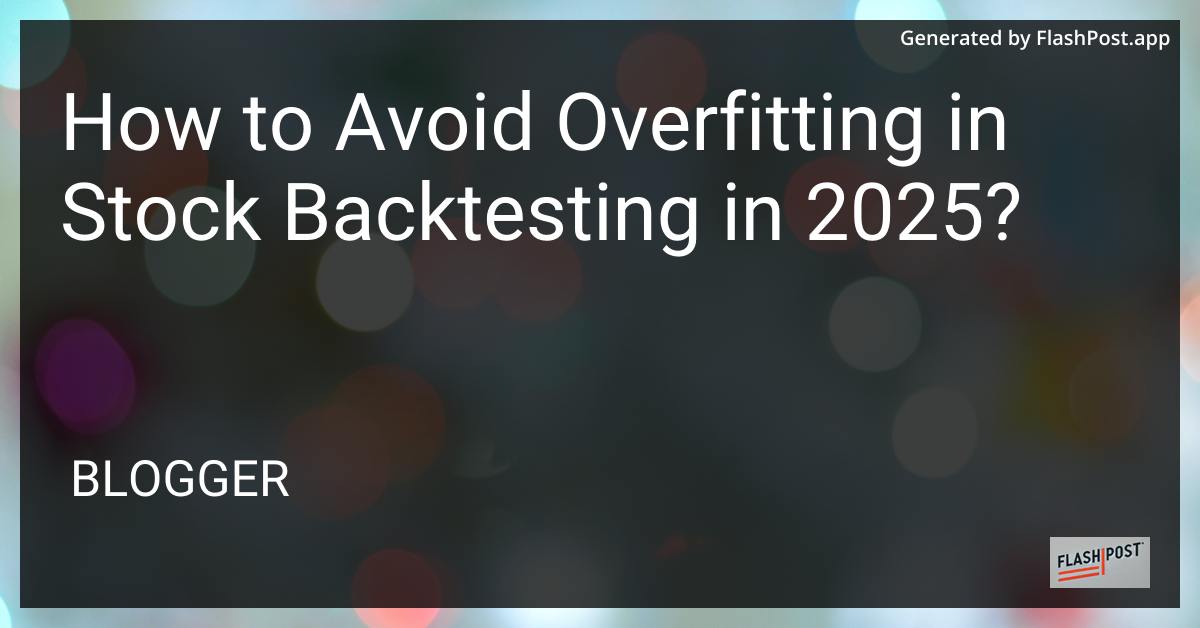How to Avoid Overfitting in Stock Backtesting in 2025?

How to Avoid Overfitting in Stock Backtesting in 2025
In the realm of stock trading, backtesting is an essential process that helps traders evaluate the viability of their trading strategies. However, a recurrent challenge is avoiding overfitting, especially with the increasingly sophisticated modeling techniques in 2025. Overfitting occurs when a model is too complex, capturing noise rather than the underlying pattern. Here we explore some strategies to avoid overfitting your stock backtests and improve the robustness and reliability of your trading strategies.
Understanding Overfitting in Stock Backtesting
Overfitting happens when a trading model is tailored too closely to historical data. This means the model performs well on past data but fails to predict future trends accurately. The pitfall of overfitting is that it gives a false sense of security with seemingly perfect backtest results, only to produce disappointing outcomes in live trading environments.
Strategies to Prevent Overfitting
1. Use Simpler Models
Resist the temptation to use overly complex models. Complex models can fit the historical data perfectly, but they are more likely to adapt to the noise rather than the signal. Start with simpler models and increase complexity only when necessary.
2. Employ Cross-Validation Techniques
Cross-validation is a statistical method used to estimate the skill of a machine learning model. It helps ensure that the model’s success on historical data isn’t due to overfitting. By dividing your dataset into multiple parts and testing the model’s performance on each, you can get a better sense of its true predictive power.
3. Use Out-of-Sample Testing
Set aside a portion of your data as out-of-sample data and do not use it in your initial model building. This provides a more realistic environment to test your model’s future performance as it limits the exposure to the training dataset.
4. Regularization Techniques
Regularization adds a penalty for complexity, reducing the chances of overfitting. Techniques such as Lasso and Ridge Regression are effective in constraining models from becoming overly complex.
5. Use a Walk-Forward Analysis
A walk-forward analysis involves taking parameters that are optimized on a segment of historical data, then testing the parameters on a subsequent out-of-sample segment. This continuous re-calibration mimics actual trading conditions more accurately.
6. Limit the Number of Parameters
When creating a model, using too many parameters can lead to overfitting. Focus on key factors that drive your strategy and limit unnecessary indicators that add noise.
7. Leverage Robust Backtesting Methods
Utilize updated and robust backtesting methods that integrate real-world conditions to minimize overfitting. Choose platforms that simulate various market conditions to see how your strategy holds up.
8. Automate and Regularly Update Backtests
Automating your backtesting strategy with scripts not only saves time but also reduces human error. Regular updates and re-runs will account for new market data and trends. Explore stock backtesting automation to streamline your processes.
Conclusion
Overfitting remains a significant challenge in stock backtesting, but by utilizing these strategies, you can minimize its impact. The goal is to develop and test models that are both robust and adaptable to uncertain and dynamic future market conditions. Adapt these techniques, and continually evolve your backtesting methodologies to stay ahead in the complex world of stock trading in 2025.
Comments
Post a Comment